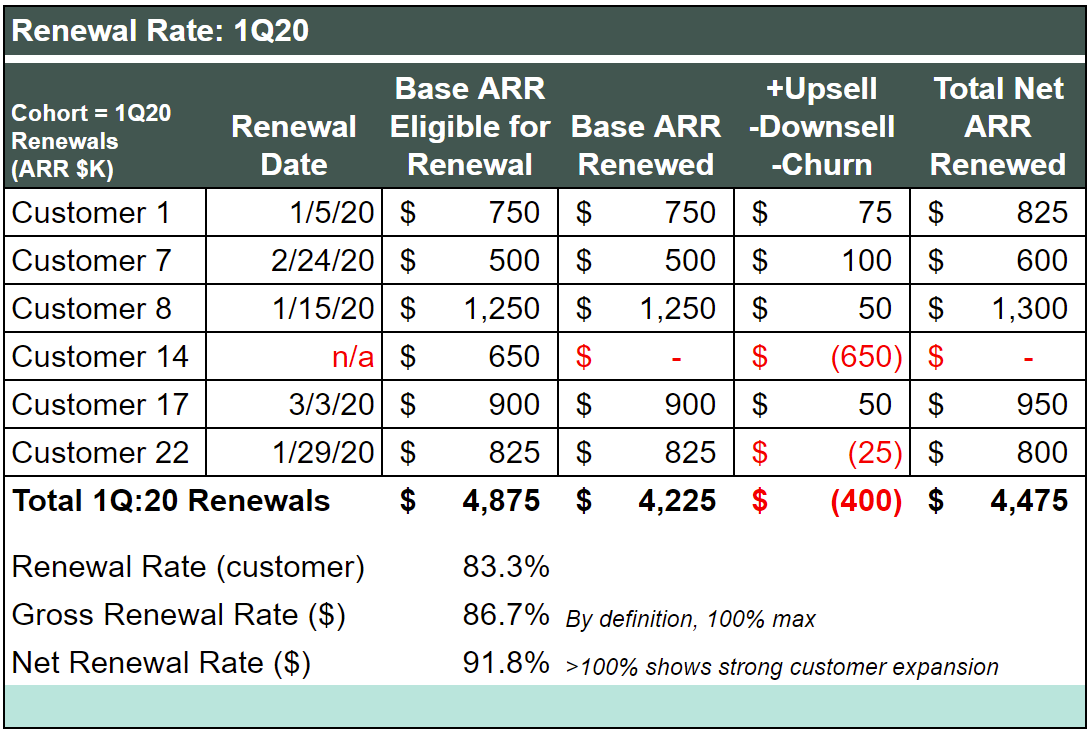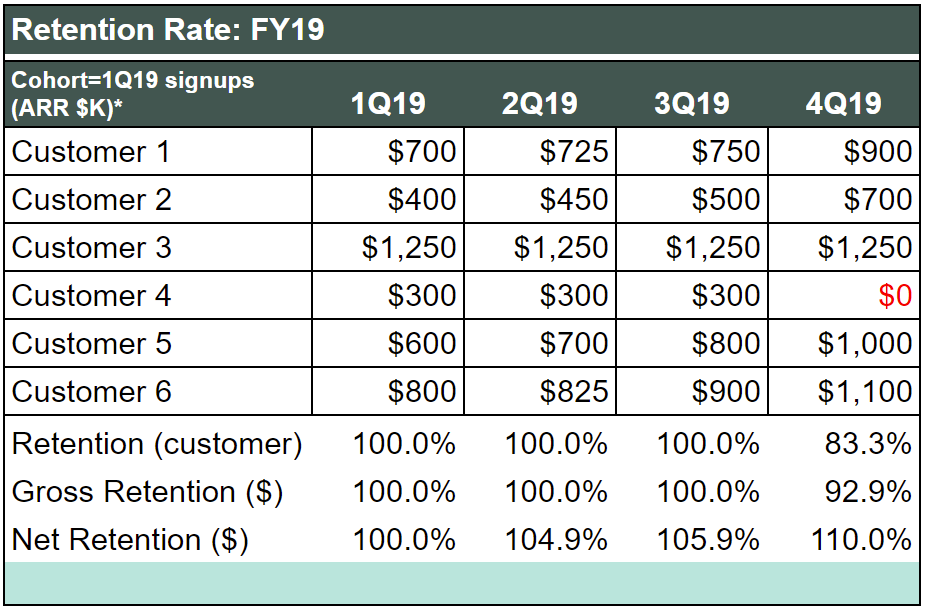SaaS metrics can be tricky when different people use the same terms differently. “Renewal” vs. “Retention” is one of those where the two terms are often used interchangeably. Below we look at how they’re used to clear us their differences.
In both cases, we’re looking at customer cohorts, or groups of customers that share specific traits. But we’ll set up our cohorts differently and thus learn different things about customer behavior:
- Renewal Rate uses customer cohorts based on the end date of each customer’s contract;
- Retention Rate uses starting cohorts, or customers that signed up during the same period, and looks at their behavior over the long term.
We created two sample spreadsheets to show how you work with each.
Renewal Rate. Use it to find out how many customers re-signed at the end of their contract. To get an accurate view of this, you set up your cohorts by listing all the customers that renewed during a period, ignoring contract start date. The Renewal rate is the best count (customer or $) of whether customers said yes or no when their contracts came up for renewal.
As with other churn metrics, you can and should calculate both a customer count number and a dollar-based number. Here’s a look at how to set that up:

Retention Rate. Use it to understand how well you’re retaining groups of customers that signed up at the same time. One key insight is looking at the dollar-based calculation to see how much an initial $1 in sales grew over a specified period of time.
Here’s a simplified view of retention tracking:
 The table illustrates something common with early-stage startups: the outsized impact on metrics of losing an early customer.
The table illustrates something common with early-stage startups: the outsized impact on metrics of losing an early customer.
Dive deep into this topic in our Customer Retention series: